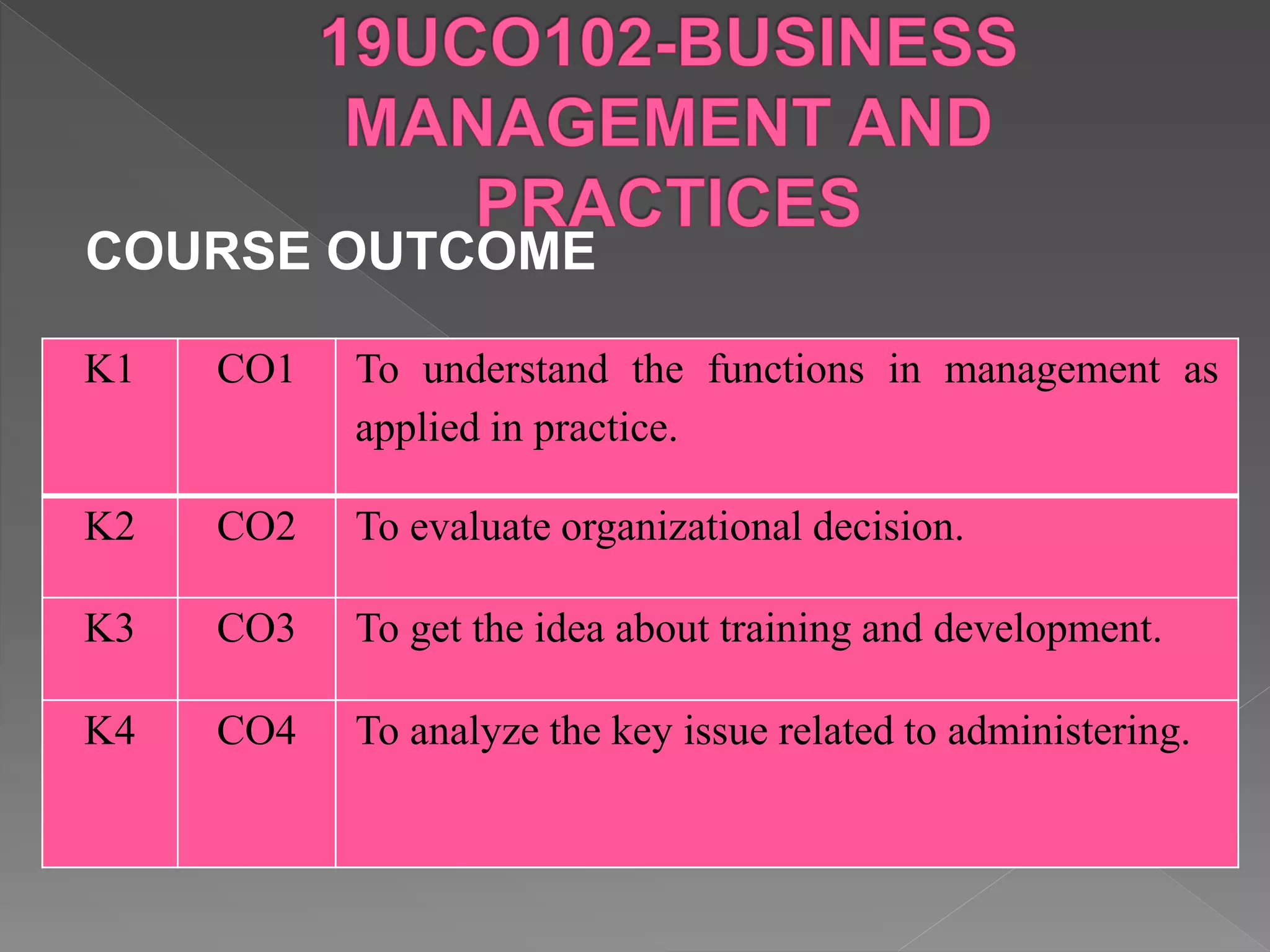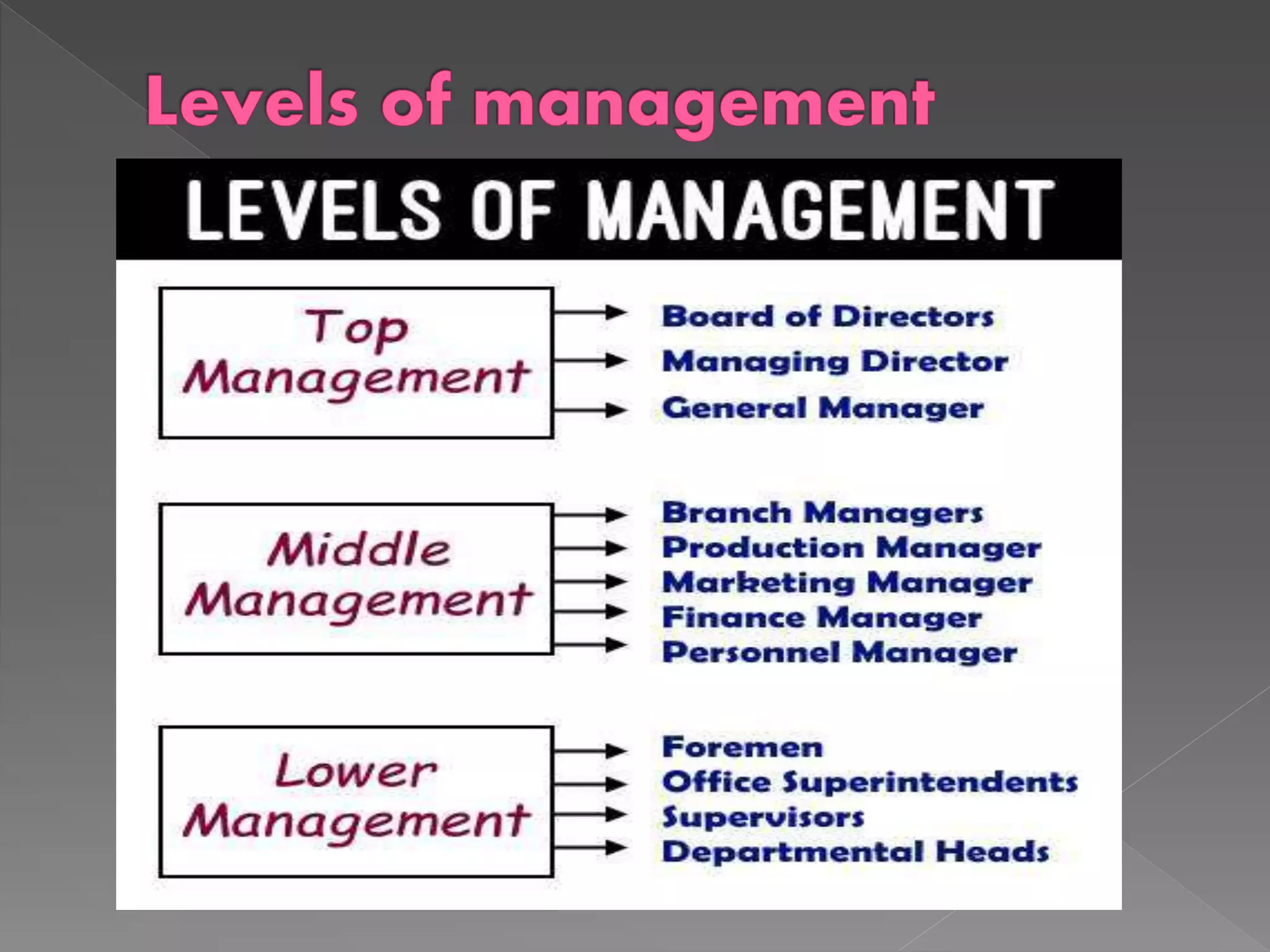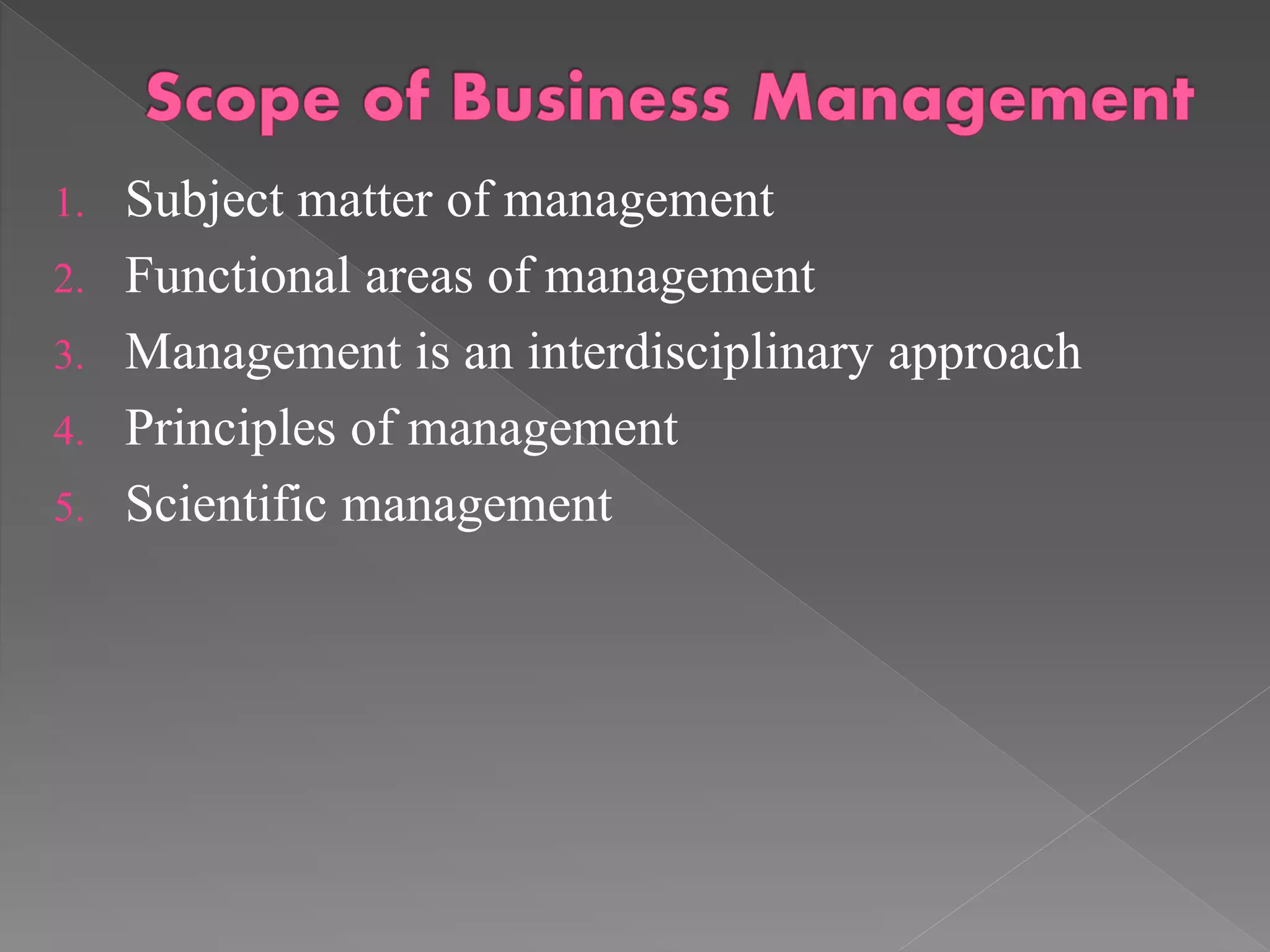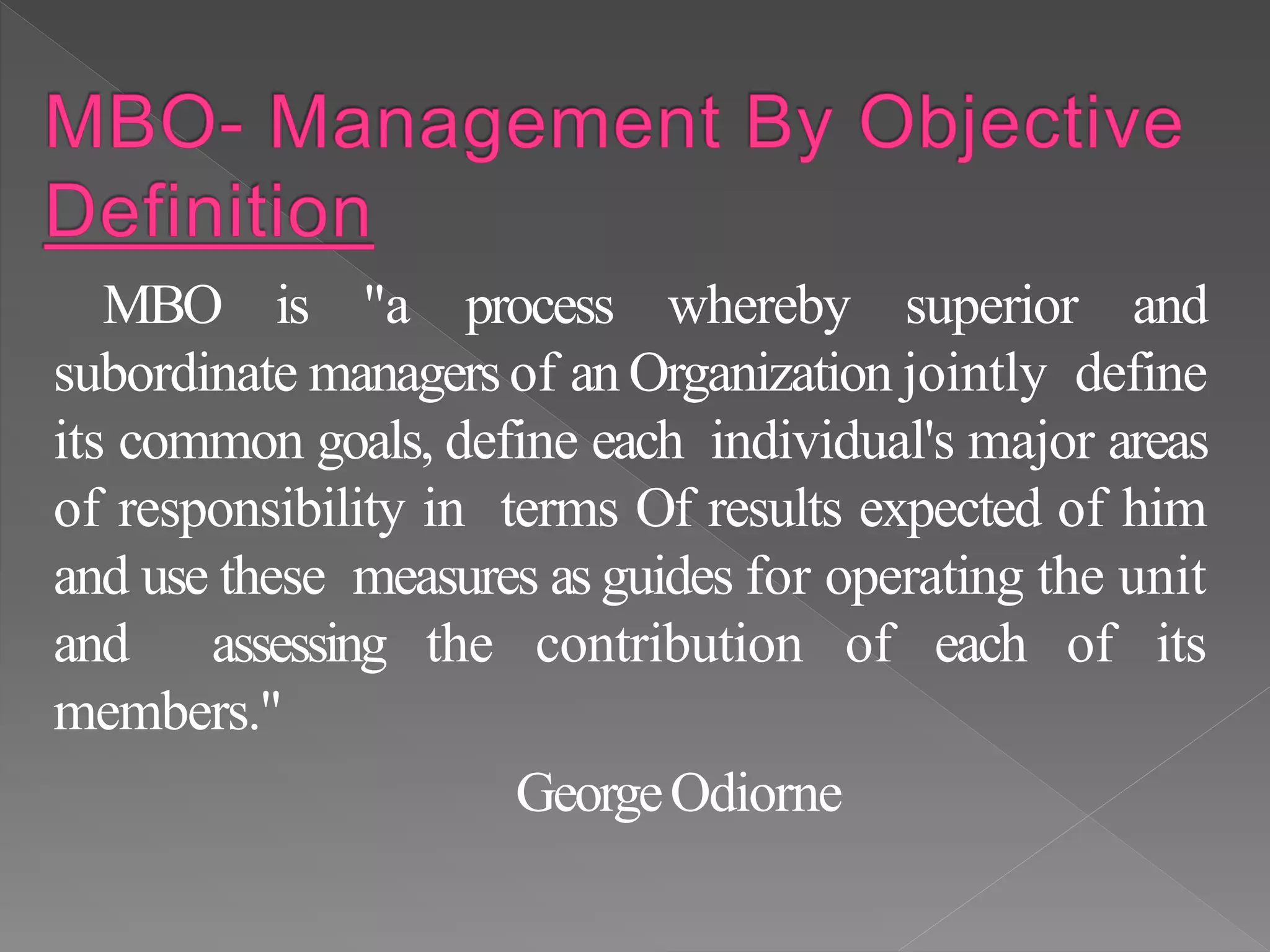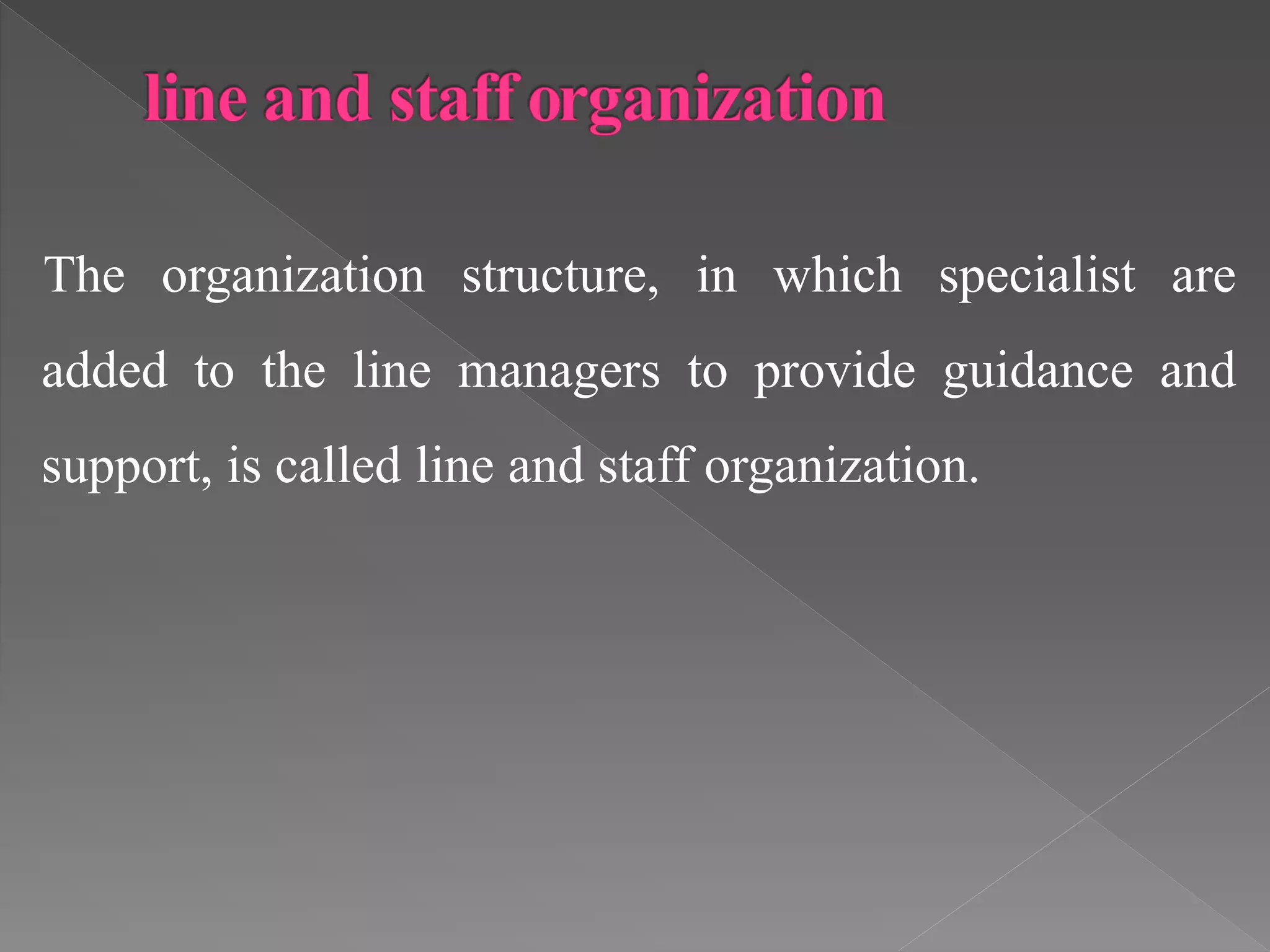1. The document outlines the course outcomes and units of a management course.
2. The key functions of management discussed are planning, organizing, staffing, directing, coordinating and controlling.
3. Important management concepts explained briefly include MBO, decision making, types of organization, and motivation theories.

